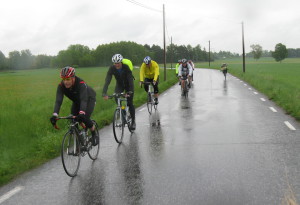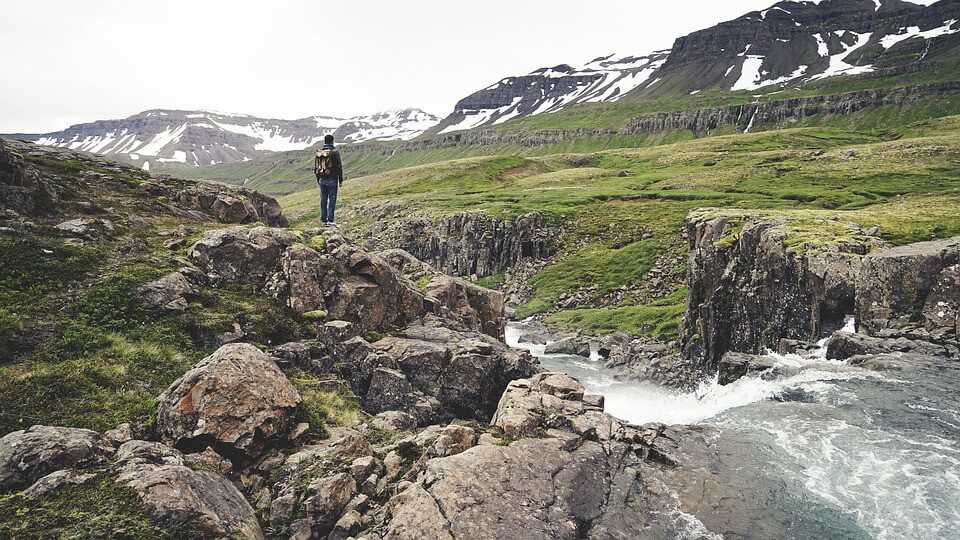Sooner or later, everyone who cycles will be faced with riding in the rain. Although at first it seems to dampen the spirit, there are ways to prepare and not only survive but also enjoy it.
For the cyclist, the most important item of clothing for battling the rain is a jacket or cape. It is important to remember that the more wet you get, the colder you will be. A waterproof jacket with a dropped skirt in the back will  keep the torso dry as well as help to regulate body temperature. GoreTex is the most suitable material since it is both waterproof and breathable. A thinner rain jacket or “shell” can be used with wicking underlayers made of wool or polypropylene. Neon and bright colors are especially important in dim conditions.
keep the torso dry as well as help to regulate body temperature. GoreTex is the most suitable material since it is both waterproof and breathable. A thinner rain jacket or “shell” can be used with wicking underlayers made of wool or polypropylene. Neon and bright colors are especially important in dim conditions.
Extremities are the first part of the body to respond to cold in order to maintain core temperature. Protect your hands and feet with insulated gloves that are not too thick as to hamper bike control and water-resistant overshoes. Clear or yellow lenses for eye protection are critical in low light. When cycling in the rain, normal sunglasses cut out too much light and can make road obstacles difficult to see. Use of an anti-fog product (eg. Rain-X) on the lenses may be helpful. A cycling cap with a peak when worn under your helmet will shield some of the rain and road spray.
Once you are fully garbed, it’s time to turn attention to the bike. Mudguards or full fenders on both the front and rear wheels are essential to keep road water off your feet, lower legs, and back, as well as limit dirt from getting into the chain and gears. Several vendors sell clip-on fenders that mount to the seat post and downtube. It goes unsaid that fenders are a requisite on rainy-day group rides. It is highly recommended that plenty of bright lights and reflectors be used. LED lights are inexpensive and most have clips that allow for attachment. Flashing LED lights are a good addition.
 Once the ride begins, remember that most tire rims require a full revolution before the brake pads squeegee the water from the braking surface, so plan ahead and brake early. Road surfaces will be most slick from oil buildup just after the rain starts. Metal surfaces such as utility hole covers and painted surfaces such as bike lane markers are particularly slippery during and after a rain. Beware of puddles and standing water; many a mangled wheel has occurred due to submerged potholes.
Once the ride begins, remember that most tire rims require a full revolution before the brake pads squeegee the water from the braking surface, so plan ahead and brake early. Road surfaces will be most slick from oil buildup just after the rain starts. Metal surfaces such as utility hole covers and painted surfaces such as bike lane markers are particularly slippery during and after a rain. Beware of puddles and standing water; many a mangled wheel has occurred due to submerged potholes.
Following a rainy-day ride, extra effort should be made to wipe water and dirt off the wheel rims. Coat the chain with a degreaser (eg. WD40 or GT85), rub dry, and then lubricate with a heavier chain lubricant. By following some extra precautions, an avid cyclist can enjoy his ride, come rain or come shine.
